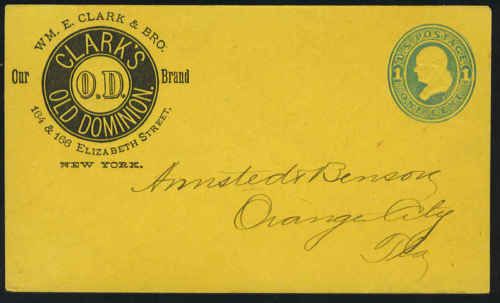
Samuel Raynor and Co, is the New York firm from the 1800s that seems to be responsible for the numbering of different envelope sizes. At that time, envelope sizes had not yet been standardized among manufacturers. So if you ordered a #9 envelope from Samuel Raynor you’d get one that measured 4 x 8 ¾”. That would not necessarily be the size you got if you ordered some #9s from a different company.
In 1876, Samuel Raynor came out with chart that listed the various sizes they offered using the numbering system that has mostly carried over to what we use today. Raynor lists the #10 which he calls “Bond Size” as 4 1/8 x 9 ½. That is the only envelope size on the chart which matches what we use today. Many of the other sizes are close. The numbers 11, 12 and 14 (interesting that there wasn’t a number 13 then or now - I’m guessing it must have something to do with superstition) are all within an eighth or a quarter inch or so in both dimensions.
The “Letter Size” envelopes were small: 3-1/8 x 5-3/8 and 3-3/8 x 5-7/8. They were designed to be compatible with what was the common notepaper size of the day. As I’ve mentioned, during this period, most envelopes were made for personal use. Those were the days when most people actually wrote letters and mailed them to their friends and family. Business to business mail was not common at the time. The larger envelopes: #10 size and up; what we now refer to as letter-size envelopes are called “Official Size”. That term is still used by some companies today but rarely.
Some of the descriptions are quaint and reflect the times. The Number 3 envelope measuring 2- 5/8 x 4 ¾ was called “Ladies’ Note Size”. Presumably the ladies of the day used smaller notes. Such a description today would most likely cause protests. The Number 2 envelope, measuring slightly smaller than the Ladies Note at 2 ½ x 4 ¼ was called “Billet-Doux Size”. The French phrase for “love letter” must have been in common use at the time for a company to use it like that. Wonder what the French for “love text” would be? Doesn’t have quite the same ring does it? There were three different sizes; small, medium and large of “Drug” envelopes. They were all very small, the smallest measuring 1-3/8 x 2 ¾ . Drug envelopes are still available today but they tend to be larger; around 2 ¼ x 3 ½. Not sure what that says about us: do we take more prescription drugs these days or are the pills just bigger?
Envelopes in those days were used as packaging for a variety of products such as combs and toothbrushes. I can hear many envelope manufacturers emitting a nostalgic sigh. Sometimes the “good ol’ days” were better.
